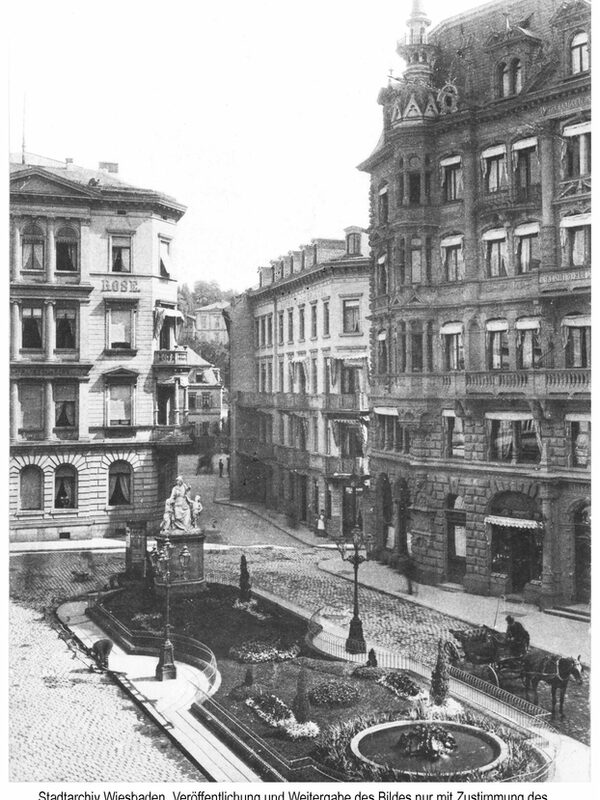Wreath square
Today, Kranzplatz is generally used to refer to the town square at the end of the inner town axis Kirchgasse/Langgasse and its extension. Kranzplatz originated from the medieval Rindsfußplatz, which was named after a bathhouse. Until 1888, this square closed off Langgasse at the level of the Schwarzer Bock hotel. Here there was a longitudinal oval arrangement of trees, for which the name "Crantz" was coined in the mid-18th century.
Around 1900, there was still only a narrow street connection between the small Kranzplatz, which had been adorned with a statue of Hygieia since the mid-1850s, and the area around the strongest and most important hot spring in Wiesbaden, known as Kochbrunnenplatz. The open spaces were separated by the predecessor building of the Hotel Rose, which stood diagonally between the two squares. This building was demolished, as was the Europäischer Hof located diagonally behind it, in connection with the new construction of the Grandhotel Rose in 1896-1902 and the redesign of the facilities on Kochbrunnenplatz, just as the Weißer Schwan and Engel hotels located on the other side of the street had to make way for the new construction of the Palasthotel in 1903-05. This meant that the street could be extended and the urban caesura between Kranzplatz and Kochbrunnenplatz could be eliminated.
It was not until the second half of the 19th century that the square developed into the spacious open space that is now available to the city's population and its guests as Kranzplatz; it was given its current dimensions after 1945. The square was given an important upgrade as a central location for Hessian state politics in 2004 with the inauguration of the Hessian State Chancellery in the former Hotel Rose. Thanks to its appealing design, Kranzplatz and Kochbrunnenplatz, which is used synonymously with it, are among the most attractive areas in Wiesbaden and thus the most important core area for the history of the city's development over the centuries. This is also demonstrated by the Kranzplatz Festival, which since 1981 has developed from a flea market into one of the city's most popular open-air festivals and attracts thousands of mostly young people for five days every year around Ascension Day.
Literature
Jordan, Jörg: In the shadow of Napoleon. Staatsaufbau in Nassau und Stadtentwicklung in Wiesbaden, Regensburg 2014 (Schriften des Stadtarchivs Wiesbaden 13) [pp. 253-257].
